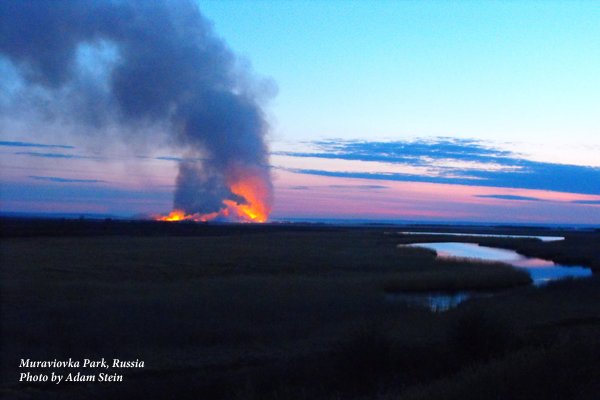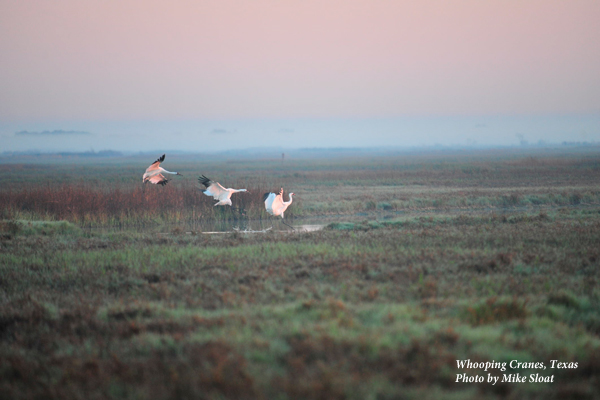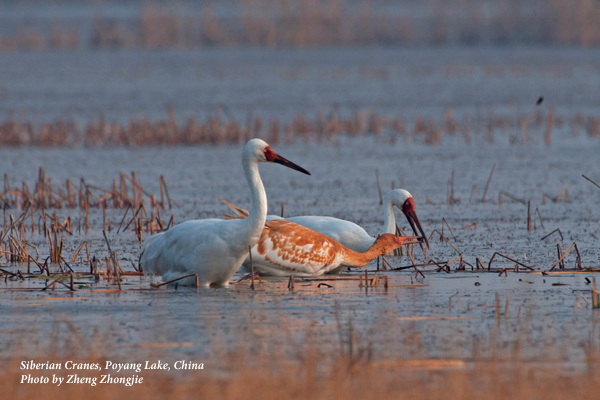
I was working in Zambia when word came that the United States would pull out of the international Paris Agreement on climate change. Listening to this news with a group of Zambian colleagues, I was saddened. In Zambia, and nearly everywhere we work around the world, climate change is treated as a life or death matter. The prospect of intensely prolonged droughts and water shortages, chronic food insecurity, power outages, coastal land loss under rising seas, and extremely violent storms doesn’t bode well for poor countries like Zambia that lack the resources to adapt to these daunting challenges. These countries have contributed little to global warming but face the brunt of its impacts.
When I returned to the comfort of a wet and green Wisconsin summer, it was easier for me to understand why we are still debating or even ignoring the reality of climate change. For many people in the U.S. it just doesn’t feel very risky to be wrong. Some believe it’s too costly to combat climate change. Doing so would threaten our way of life, some fear. For others, warmer winters don’t sound so bad. If oceans rise, we’ll build more seawalls. And even if the doomsayers are right, the rest of the world seems awfully far away. Without a sense of risk or urgency, our wait-and-see complacency seems like a reasonable way forward. But is it really?
And what does all this have to do with cranes? Plenty.
Cranes are one of the most endangered families of birds in the world, and highly vulnerable to climate change – especially in the places where habitat loss, water resources development and invasive species are already taking a toll on crane populations. Changing climate already affects cranes across large parts of Asia, Africa, Australia and North America.

Along the coast of Texas, rising sea levels threaten to drown critical habitat for the Endangered Whooping Cranes that winter in salt marshes. The freshwater inflows that sustain blue crabs and other food sources for Whooping Cranes in these coastal marshes are diminishing as well, as droughts become more frequent and water demands rise across the region.
In the polar regions where the effects of climate change are most pronounced, the islands, peninsulas and low-lying shores where Critically Endangered Siberian Cranes breed are being replaced by permafrost melts. It is unclear how the cranes will respond, but many nesting sites will be irreversibly lost.
The high altitude landscapes of central Asia, where Vulnerable Black-necked Cranes nest, have experienced some of the most dramatic warming due to climate change. In the coming decades, the retreat of melting glaciers may greatly reduce the extent of lakes and marshes where the cranes nest and feed. Will they find alternative habitat? Their future is uncertain.
Even the great floodplains of southern Africa, home to most of the world’s Vulnerable Wattled Cranes and a wealth of elephants, hippos, buffalo and other iconic wildlife, are increasingly vulnerable to drought, fire and invasive species spurred by hotter, drier conditions and more extreme weather patterns. Rainfall-runoff across large swaths of this region is projected to decrease by 40% or more, which would displace people and wildlife on an unprecedented scale.
As a licensed, professional hydrologist, I understand the severity of these challenges. I have published research on the impact of climate change on hydropower production and wetland services in the Zambezi River Basin of Africa and the Mekong River Basin of Southeast Asia. I’ve worked in the trenches of water management projects in more than a dozen countries and served on international think tanks around these issues. The changes to our land and livelihoods are not decades or centuries away, they are happening now, and they are getting worse every year.

Is there reason for hope? Yes – there is much we are already doing, and much more we can do. Cranes are important flagships, modern-day “canaries in the coal mine,” for environmental changes that threaten us all. When we work to save cranes, we are working to finding new pathways to sustain our water, land and livelihoods in a rapidly changing world. In seeking to better manage water resources in the face of climate change, for example, we draw from important lessons gained from two decades of engagement – that the needs of people, and the needs of cranes and many other species of plants and animals, are often surprisingly compatible and linked strongly to healthy wetlands and watersheds.
In the Zambezi River basin, we are challenging river developers to incorporate climate change into the design and operation of new dams, encouraging environmental flow releases from existing dams, and seeking energy alternatives more resilient to climate change and less harmful to river users and wildlife. In China, we have worked with nature reserve authorities and scientists to negotiate water releases to maintain water and vegetation in four key wetlands of the Songnen Plain. At Momoge National Nature Reserve, we have helped the reserve incorporate community needs into water management plans to reduce vulnerability to highly variable precipitation. This approach benefits the people who share the wetlands with cranes, reduces the risk of resource conflicts, and results in more efficient water use.
Where shifts in climate are driving changes in key landscapes, we set a high priority on research and modeling to understand the impacts on cranes and their habitats so that we can devise adaptive conservation responses. Our Russian colleagues are studying the impact of climate change in the tundra environment where Siberian Crane’s nest, including key indicators of change such as a reduction in the permafrost layer. We are modeling how sea-level rise will impact current and future estuarine wintering grounds of Whooping Cranes in Texas, and using this knowledge to assist in securing conservation easements and other set-asides that will accommodate the recovering crane population under future sea-level conditions. And we are working with partners to secure water rights that ensure freshwater inflows to these vital lands.
Of course, adapting to the harsh realities of our changing climate is only half the battle. We also need to combat the drivers of climate change directly. And therein lies my greatest source of hope. Because climate change solutions enhance, not threaten, our way of life. The mayors of our major cities have realized that climate change is a public health issue and that efforts to make cities better, cleaner, healthier and more economically productive places also reduce carbon emissions. Hundreds of companies, through partnerships like “We Mean Business” now recognize that tackling climate change is one of our biggest economic opportunities, worth trillions of dollars. Businesses are setting ambitious targets to lower emissions and scale-up low carbon investment, while creating new products and services, generating employment, and reducing energy consumption. When enough of these success stories are shared and understood, perhaps our elected leaders will follow.
At the International Crane Foundation, we understand the profound risks of climate change in a world that has already changed. We work through local communities, national governments and international treaties to find meaningful solutions to climate change, and a host of conservation challenges facing our land, water and livelihoods. We believe that a future with cranes means a future with a healthier and more livable planet for all.
 Story submitted by Rich Beilfuss, International Crane Foundation President & CEO. Click here to learn more about our global programs.
Story submitted by Rich Beilfuss, International Crane Foundation President & CEO. Click here to learn more about our global programs.
